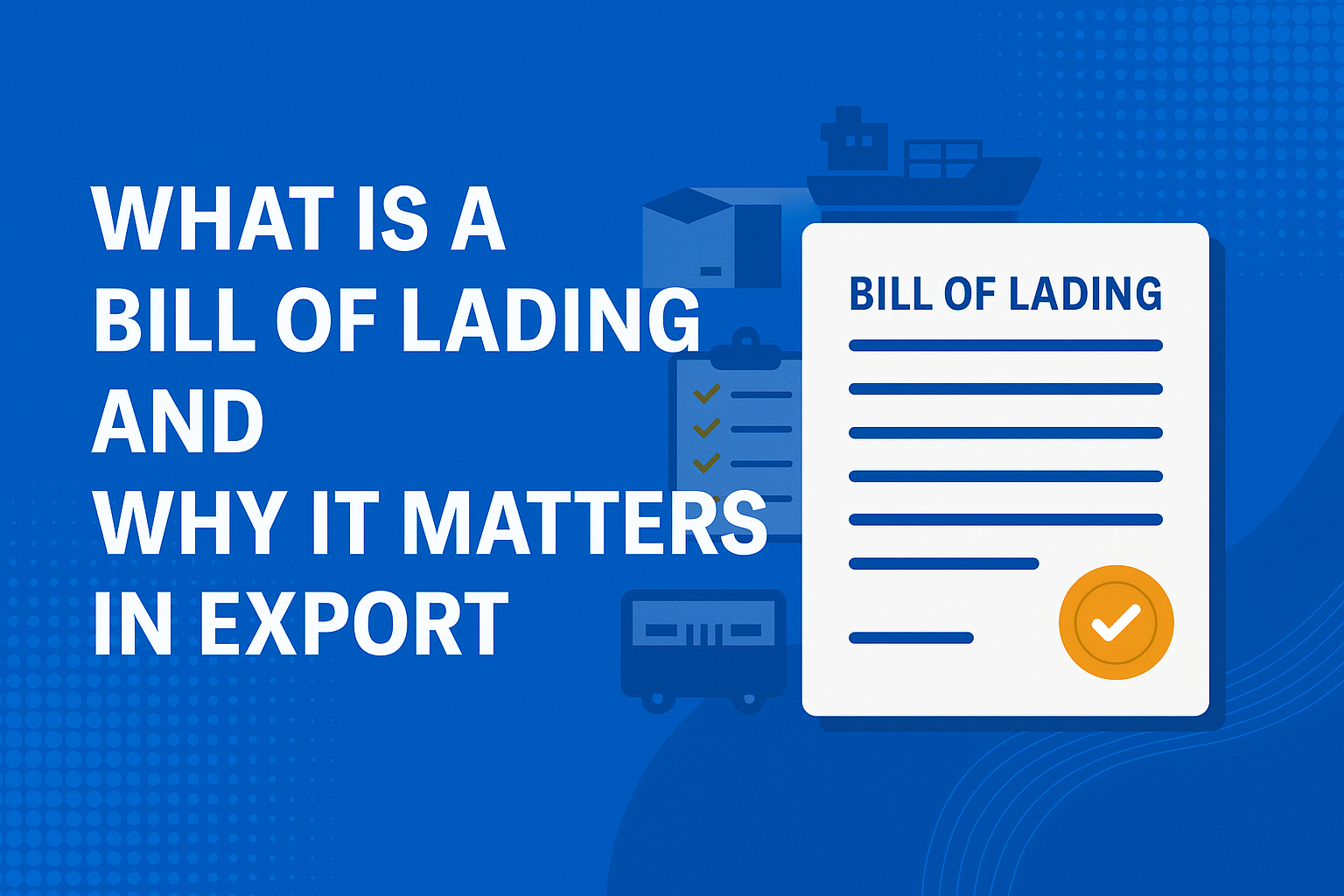- Introduction to Green Chili Export from India
- Why Export Green Chilies from India?
- Types of Green Chilies Exported from India
- Top International Markets for Indian Green Chilies
- Step-by-Step Process to Export Green Chilies from India
- Documentation Required for Green Chili Export
- Licenses & Compliance Needed
- Packaging Standards for Green Chili Export
- Logistics and Transportation Best Practices
- Costing and Profit Margins in Green Chili Export
- Challenges in Green Chili Export and How to Overcome Them
- Digital Marketing for Green Chili Export Business
- Success Stories of Indian Green Chili Exporters
- FAQs on Exporting Green Chilies from India
- Conclusion: Building a Profitable Green Chili Export Business
Discover how to export green chilies from India with this step-by-step guide. Learn about documentation, regulations, international markets, and profit margins.
Introduction to Green Chili Export from India
India, a top agricultural powerhouse, is renowned for its vibrant and flavorful green chilies. With increasing demand from global markets like the Middle East, Europe, and North America, green chili export from India has emerged as a profitable business opportunity for farmers and entrepreneurs alike. If you’re interested in tapping into this spicy export market, this comprehensive guide will walk you through everything you need to know—from getting started to making your first international shipment.
Why Export Green Chilies from India?
India’s Strength in Green Chili Production
India ranks among the largest producers and exporters of green chilies globally. States like Andhra Pradesh, Telangana, Karnataka, and Tamil Nadu are known for cultivating varieties rich in pungency and color, making them highly sought after worldwide.
Global Demand and Market Trends
The demand for Indian green chilies is rising due to their intense flavor, long shelf life, and organic farming methods. Many countries prefer Indian chilies for both culinary and medicinal uses. With more people turning to spicy foods and ethnic cuisines, the global chili trade is booming.
Types of Green Chilies Exported from India
India offers a variety of green chilies, each catering to specific international tastes and cooking styles.
Byadgi Chilies
Popular for their deep red color when dried, these chilies are low in pungency but high in aesthetic appeal. They are commonly exported in both green and dried forms.
Guntur Chilies
These are among the hottest chilies, famous for their high capsaicin content and sharp taste. Guntur chilies enjoy huge demand in Asian and Middle Eastern markets.
Jwala Chilies
Known for their thin, long shape and pungent aroma, Jwala chilies are often used in pickles and chutneys and are favored by Indian food lovers abroad.
Top International Markets for Indian Green Chilies
Middle East
The UAE, Saudi Arabia, and Qatar import large volumes of green chilies for culinary use. The proximity also ensures fresher deliveries and lower shipping costs.
Europe
Countries like the UK, Germany, and the Netherlands import green chilies to cater to their South Asian communities and growing interest in spicy food.
USA and Canada
These countries have a robust demand for Indian green chilies in ethnic grocery stores and restaurants, making them lucrative export destinations.
Step-by-Step Process to Export Green Chilies from India
Step 1: Register Your Export Business (IEC Code)
Before exporting, you must obtain an Import Export Code (IEC) from the Director General of Foreign Trade (DGFT). This is a mandatory requirement for all exporters in India.
Step 2: Source Quality Green Chilies
Partner with farmers or aggregators from chili-producing regions to ensure high-quality, pesticide-free produce that meets international standards.
Step 3: Sort and Grade the Chilies
Proper sorting and grading improve shelf life and buyer satisfaction. Chilies are typically graded based on size, color, pungency, and cleanliness.
Step 4: Packaging and Labeling Requirements
Use food-grade, ventilated boxes or pouches with proper labeling. Include details like product name, weight, country of origin, and batch number.
Step 5: Phytosanitary Certificate & APEDA Registration
Get a phytosanitary certificate from the Plant Quarantine Department to prove the produce is pest-free. Also, register with APEDA (Agricultural and Processed Food Products Export Development Authority).
Step 6: Choose Shipping & Logistics Partner
Select a logistics provider experienced in handling perishable goods. Air freight is preferred for freshness, though sea freight is cheaper for bulk orders.
Step 7: Finalize Buyer and Payment Terms
Negotiate with international buyers on platforms like Alibaba, Indiamart, or TradeIndia. Clearly define Incoterms, payment method (LC or TT), and delivery timelines.

Documentation Required for Green Chili Export
Essential Export Documents Checklist
- Import Export Code (IEC)
- Commercial Invoice
- Packing List
- Certificate of Origin
- Phytosanitary Certificate
- Bill of Lading/Airway Bill
- FSSAI Certificate
- APEDA Registration
Country-Specific Requirements
Certain countries require extra documentation such as:
- Residue testing reports
- Organic certification
- FDA approval (for the US)
Licenses & Compliance Needed
FSSAI License
Mandatory for all food exporters to ensure the produce is safe for consumption.
APEDA Registration
Required for all agricultural exporters to avail benefits and access international markets.
Export Inspection Certificate
Issued by the Export Inspection Council (EIC) to meet specific standards set by importing countries.
Packaging Standards for Green Chili Export
Packaging Materials and Units
Use corrugated fiberboard boxes or clamshell packs that allow air circulation. Typical weight is 2-5 kg per box.
Temperature and Humidity Considerations
Green chilies must be kept at 7–10°C with 85–90% relative humidity during transit to maintain freshness and color.
Logistics and Transportation Best Practices
Air vs. Sea Freight Options
- Air freight: Fast, suitable for small-to-medium quantities.
- Sea freight: Cost-effective for large consignments but riskier for perishables.
Cold Chain Supply Importance
Maintaining an unbroken cold chain prevents spoilage and preserves the chili’s quality until it reaches the buyer.
Costing and Profit Margins in Green Chili Export
Per kg Export Rate and Freight Charges
Export price ranges from ₹40–₹100 per kg, depending on variety, quality, and demand. Air freight costs approx. ₹60–₹120 per kg.
How to Calculate Profit Margin
Deduct production, logistics, documentation, and packaging costs from the selling price to determine your margin. Target a 15–25% net margin for sustainable profit.
Challenges in Green Chili Export and How to Overcome Them
Exporting green chilies, though lucrative, comes with its set of hurdles. Here’s how you can tackle them effectively:
Seasonal Price Fluctuations
Green chili prices are heavily influenced by seasonal yields and monsoon patterns. This can impact profit margins if you’re not careful.
Solution: Establish forward contracts with farmers and buyers to lock in prices. Maintain a small buffer stock to stabilize supply during lean seasons.
Pest and Contamination Issues
Infestation during storage or transit can result in consignment rejections.
Solution: Adopt integrated pest management (IPM) techniques at the farm level and ensure cold storage throughout the supply chain. Always obtain a phytosanitary certificate before export.
Digital Marketing for Green Chili Export Business
In the digital age, finding buyers and building trust starts online.
B2B Portals to Find Buyers
Leverage global and Indian trade portals like:
- Alibaba
- TradeIndia
- ExportersIndia
- GlobalSources
These platforms help connect you with verified buyers and streamline communication.
Building a Website & SEO Strategy
Create a professional website (like www.startexportindia.com) showcasing your products, certifications, and logistics capabilities. Invest in SEO to rank higher for keywords like:
- Green chili exporters from India
- Fresh Indian green chilies
- Bulk chili export India
Add client testimonials, photos of packaging, and export documents to build credibility.
Success Stories of Indian Green Chili Exporters
Several Indian exporters have made a name for themselves globally through strategic planning and quality control.
One such success is a small trader from Andhra Pradesh who started with a 500 kg shipment to Dubai and now exports over 10 tons monthly. By consistently delivering quality and maintaining a cold chain, he gained loyal clients in the UAE and UK.
Another exporter from Gujarat partnered with local farmers, implemented organic practices, and received organic certification—allowing him to command premium prices in European markets.
FAQs on Exporting Green Chilies from India
Q1. Is it profitable to export green chilies from India?
Yes, with proper planning, quality sourcing, and logistics, green chili export can yield profit margins of 15–25%.
Q2. What is the minimum quantity required to start green chili export?
You can begin with a trial consignment of 500 kg to 1 ton depending on the buyer’s requirements.
Q3. Do I need a cold storage facility for green chili export?
While not mandatory, it is highly recommended to maintain freshness and extend shelf life during transit.
Q4. What is the shelf life of exported green chilies?
Properly packed and refrigerated chilies can last up to 2–3 weeks post-harvest.
Q5. Which certifications are mandatory for chili export?
Mandatory certifications include FSSAI license, APEDA registration, and Phytosanitary certificate. Some countries may also require organic or residue-free certifications.
Q6. Can I export green chilies directly without a middleman?
Yes, if you have the proper licenses and access to buyers, you can export directly and earn better margins.
Conclusion: Building a Profitable Green Chili Export Business
Exporting green chilies from India offers immense potential, provided you follow the correct legal procedures, maintain quality control, and understand the international market demands. With India’s abundant supply, government support, and increasing global appetite for spicy foods, now is the perfect time to enter this booming sector.
By leveraging online platforms, cold chain logistics, and farmer partnerships, even small traders can scale quickly and compete globally. Let www.startexportindia.com be your launchpad into the world of agri-exports.



